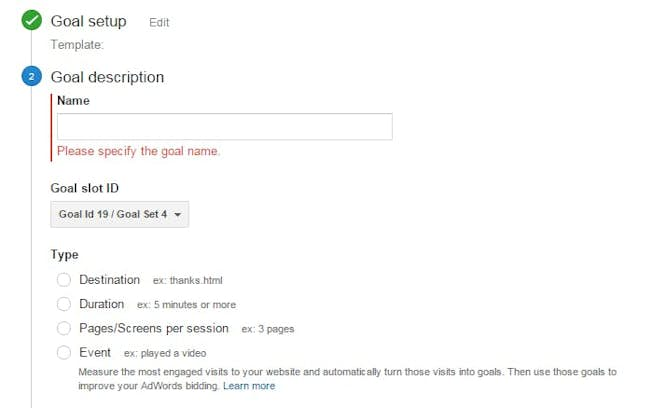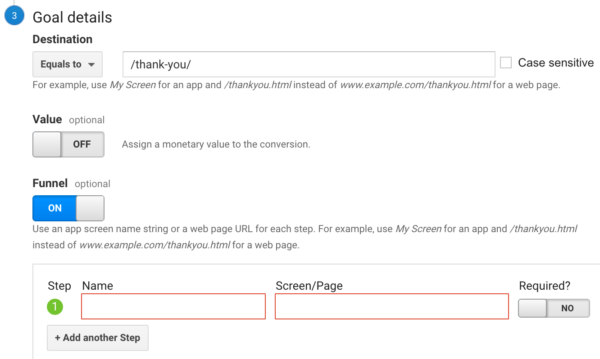Find Out What Data Is Google Analytics Goals Unable to Track
Find Out What Data Is Google Analytics Goals Unable to Track
Blog Article
Discover the Limitations of Google Analytics Goals: Unveiling the Data Types That Remain Untrackable
As companies significantly rely on data-driven decision-making, comprehending the constraints of tools like Google Analytics ends up being extremely important. While Google Analytics Goals offer valuable understandings right into customer interactions, there exist information kinds that elude tracking, posturing challenges to a thorough understanding of customer behavior.
Incomplete User Journey Tracking
Incomplete customer journey monitoring within Google Analytics can impede the ability to precisely examine individual behavior. When the individual journey is not totally tracked, there are spaces in the data that stop an extensive understanding of exactly how individuals engage with a website. This lack of understanding can lead to missed opportunities for optimization and renovations to the user experience.
One common concern with incomplete customer journey monitoring is the lack of ability to see the complete path that users take before finishing an objective or leaving the site. Without this information, it is challenging to determine where individuals may be encountering barriers or rubbing factors that stop them from transforming. In addition, incomplete tracking can cover the effect of certain advertising efforts or internet site modifications on individual behavior.
To resolve this constraint, it is crucial to establish up correct tracking systems within Google Analytics to capture the whole customer journey. This may include setting up occasion tracking, objective funnels, or using devices like Google Tag Supervisor to guarantee that no important communications go unrecorded. By acquiring an extensive sight of the individual trip, site proprietors can make even more educated decisions to boost user interaction and drive conversions.
Attribution Obstacles
Navigating through acknowledgment obstacles in Google Analytics needs a complete understanding of exactly how various touchpoints add to the total conversion procedure. Acknowledgment challenges emerge from the intricacy of modern-day client journeys, where individuals communicate with numerous channels prior to transforming. Google Analytics supplies various acknowledgment designs like initial touch, last touch, and straight, each supplying a various perspective on just how credit history is designated to touchpoints along the conversion path. These designs might not always accurately reflect the true impact of each touchpoint on the conversion.
One typical attribution challenge is the trouble in attributing conversions to the correct resource, particularly in cases where users communicate with several channels prior to transforming. This can cause mistakes in establishing which advertising and marketing efforts are driving one of the most conversions. Furthermore, cross-device monitoring postures another attribution obstacle, as individuals usually switch over between devices throughout their journey, making it challenging to track their interactions perfectly. Online marketers need to thoroughly evaluate and analyze attribution information to make educated decisions and maximize their advertising strategies successfully.
Offline Conversions
Offered the challenges connected with connecting conversions precisely in online networks, the dimension of offline conversions provides a substantial possibility for marketing experts seeking a much more comprehensive understanding of their clients' trip. Offline conversions refer to actions that clients absorb the real world, such as making acquisitions in brick-and-mortar shops or over the phone, participating in occasions, or involving with printed products - what data is google analytics goals unable to track. These conversions are important for organizations that operate both online and offline, as they offer useful insights right into the efficiency of marketing campaigns across various touchpoints
Tracking offline conversions commonly posed a substantial challenge for online marketers, as it was challenging to connect these actions back to particular on the internet interactions accurately. With developments in innovation, such as the assimilation of CRM systems, unique identifiers, and voucher codes, services can currently link the space between online and offline data to get an extra holistic view of customer behavior. By efficiently measuring offline conversions, marketing professionals can optimize their approaches, designate resources more efficiently, and eventually enhance the overall customer experience.
Cross-Device Monitoring
Cross-device monitoring plays an essential role in understanding the interconnected nature of customers' digital interactions throughout numerous tools. In today's omnichannel globe, where individuals effortlessly have a peek at this site switch in between desktops, tablets, and mobile phones, tracking their actions across these tools is crucial for online marketers to gain a thorough view of their customer trip.

Additionally, personal privacy issues and laws such as GDPR and CCPA have even more difficult cross-device tracking. With customers demanding even more control over their data and raised restrictions on tracking technologies, marketers have to locate cutting-edge and privacy-compliant ways to connect user interactions across tools.
Dynamic Web Content Engagement
Understanding user engagement with dynamic content is pivotal in optimizing digital advertising approaches for enhanced audience communication. Dynamic material refers to web site elements that transform based upon user actions, choices, or various other aspects, supplying an individualized experience. Tracking individual communications with vibrant web content postures difficulties for conventional analytics tools like Google Analytics.
While Google Analytics can track standard interactions like clicks and web page views, it might have a hard time to capture even more nuanced engagements within vibrant web content. what data is google analytics goals unable to track. Metrics such as time invested on specific vibrant aspects, hover activities, or interactions within pop-ups are often not conveniently measurable making use of conventional tracking techniques. This limitation prevents marketers' capability to fully comprehend how customers are involving with vibrant web content and tailor their strategies appropriately

Conclusion
In final thought, Google Analytics objectives have constraints in tracking insufficient individual journeys, connecting conversions properly, capturing offline conversions, tracking cross-device interactions, and determining vibrant web content involvement. These constraints highlight the significance of checking out extra tracking techniques and tools to get a more extensive understanding of individual behavior and conversions beyond what Google Analytics can offer.
While Google Analytics Goals deal important understandings into customer interactions, there exist information types that thwart tracking, posing obstacles to a detailed understanding of individual behavior.Insufficient user journey monitoring within Google Analytics websites can prevent the ability to accurately examine customer actions. When the user journey is not totally tracked, there are spaces in the data that stop a comprehensive understanding of exactly how users interact with a site.One common problem with incomplete customer trip tracking is the failure to see the full path that users take before completing an objective or leaving the website. By obtaining a thorough sight of the customer journey, website proprietors can make more enlightened choices to enhance customer interaction and drive conversions.
Report this page